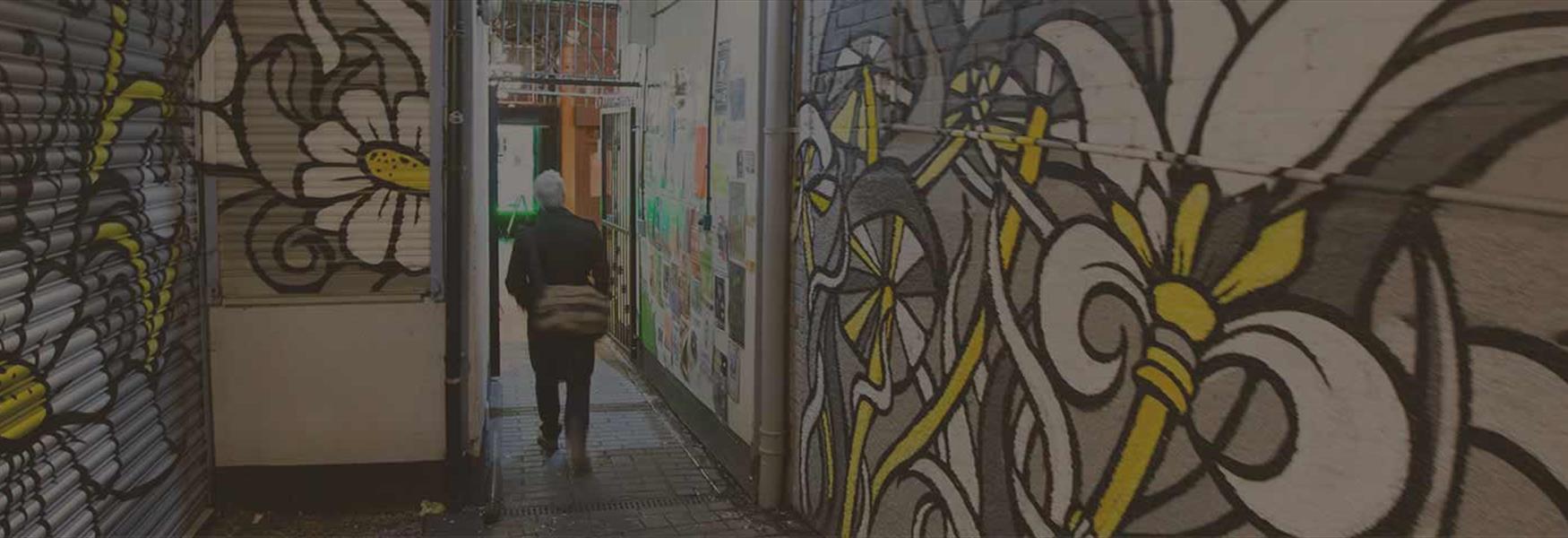To provide you with the best experience, cookies are used on this site. Find out more here.

To provide you with the best experience, cookies are used on this site. Find out more here.

To build your own Itinerary, click  to add an item to your Itinerary basket.
to add an item to your Itinerary basket.
Already saved an Itinerary?


You are here > Ideas & Inspiration > History & Heritage > Interesting Facts
We've all heard of Robin Hood, but there is far more to Nottinghamshire than the legendary outlaw alone. Home to Ice Age art, design icons like Paul Smith and the Raleigh Chopper, and one of Europe’s largest travelling fairs, there are some fascinating features and facts about the 'Queen of the Midlands'. Take a look below to discover more...
|
1. The biggest antique fair in Europe is held near Newark six times a year. |
|
2. Laxton is the last village in Europe still practising the medieval ‘open field’ system of farming. |
|
3. Some of the most important Ice Age finds in Britain were excavated at Creswell Crags near Worksop. Findings include prehistoric cave art and bas reliefs, prehistoric tools, and the remains of a variety of prehistoric animals including woolly mammoths, spotted hyenas and narrow nosed rhinoceros! |
|
4. The gigantic Major Oak stands proud in Sherwood Forest, the legendary hideout of Robin Hood and his merry men. It weighs 23 tonnes, has a girth of 10 metres (33ft) and a spread of 28 metres (92ft) making it the biggest oak tree in Britain. |
|
5. Romantic Poet Lord Byron spent much of his younger years in Nottinghamshire, residing at his ancestral home of Newstead Abbey. He also spent much time at Colwick Hall with his childhood sweetheart Mary Charworth , and his remains now rest in Saint Mary Magdalene Church, Hucknall. |
|
6. Mr Straw’s House in Worksop is a time capsule of the 1920s which has remained virtually unchanged since the Straws moved here in 1923. |
|
7. DH Lawrence, one of the most infamous writers of the 20th century, was born and brought up in Eastwood. His home is now the DH Lawrence Birthplace Museum and kept as an authentically recreated miner’s cottage. |
|
8. Southwell is home to a 12th century Minster which is famed for its outstanding medieval carvings. The golden lectern in the minster once had it's home at Newstead Abbey, but was thrown in the abbey lakes by monks during the dissolution of the monasteries in the 16th century. It was later found when the lake was dredged and taken to Southwell. |
|
9. King Charles I started the English Civil War near Nottingham Castle, surrendered at Newark and was confined at Southwell. You can explore this turbluent era of British history at The National Civil War Centre in Newark.
|
|
10. Nottingham’s Goose Fair has existed since at least 1284, when it lasted eight days. |
|
11. Nottinghamshire is home to The Museum of Timekeeping, in Upton near Southwell. Among its intricate contents is Captain Scott's pocket watch and the voice of the General Post Office’s first Speaking Clock. |
|
12. The pioneering novel 'Saturday Night and Sunday Morning' was written by local author Alan Sillitoe and is based upon his experiences as a young man in an industrial post-war Nottingham. A film was made in 1960 starring Albert Finney, with much of it filmed in Nottingham.
|
|
13. The Raleigh ‘Chopper’, now a design icon, was introduced by the Raleigh Company of Nottingham in 1969. It was re-launched in 2004. Check out their selection of electric and regular bikes, forward-thinking cargo bikes and a wall of classics from by-gone era’s at Experience Raleigh. |
|
14. William Booth, founder of the Salvation Army, was born in Sneinton in 1829. You can discover more about this man's fascinating life at the William Booth Birthplace Museum at Notintone Place. |
|
15. ‘Bendigo’ the famous prize fighter of the Victorian era, lived in Nottingham. There is a tombstone in his memory, in the shape of a lion, in St Mary’s Cemetery, Bath Street, Sneinton. |
|
16. The painter Dame Laura Knight, known for her pictures of circus performers, ballet dancers and paintings of women at wartime work, attended the Nottingham School of Art. There are a number of her paintings exhibited in Nottingham Castle. |
|
17. The shy and eccentric 5th Duke of Portland built an extensive network of subterranean tunnels and rooms under The Welbeck Estate in the 19th century. This included a library, chapel and ballroom which were all lit by gas. Today the estate is home to artist studios and businesses such as the School of Artisan Food and The Harley Gallery.
|
|
18. Boots the Chemist was founded in Nottingham by the famous Jesse Boot. Their most popular product was called Boots No Name Ointment. Their flagship store in the city centre is now The Larder on Goosegate, while a later store at the bottom of Pelham Street (now the Zara store) boasts an impressive Art Nouveau design.
|
|
19. Nottingham has a rich history of invention and innovation. Ibuprofen was discovered in Nottingham - as was tarmac (Nottingham's Radcliffe Road was the world's first tarmac road), the traffic light, HP Sauce, the video tape recorder, the MRI scanner, and high pressure water. |
|
20. In 1607 the Mayflower Pilgrims left Bassetlaw in North Nottinghamshire to start their new life in Holland. It was 13 years later - in 1620 - when the Pilgrims finally reached Plymouth, USA, becoming some of the country's first settlers. _600x671.jpg) |
© Visit Nottinghamshire 2025. All Rights Reserved






